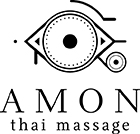How To Hook A Reader In An Essay
In order to hook a reader in an essay, you need to do more than just state your thesis. You need to provide some compelling evidence or examples that will engage the reader and make them want to continue reading. One way to do this is to start with a question or a provocative statement that will get the reader’s attention. You can also start with a story or an anecdote that will introduce your topic in an interesting way. Whatever you do, make sure that your introduction is engaging and well-written, and that it provides a preview of the main points that you will be discussing in your essay.
Grasping the Significance of a Compelling Hook
A compelling hook is an essential element of an effective essay. It is the first thing that grabs a reader’s attention and draws them into the argument. If it is effective, the hook will make the reader want to read on to find out more. A good hook is significant, and it should be related to the topic of the essay. It should also be creative and engaging, so that it stands out from the crowd.
There are many different types of hooks that can be used in an essay. Some of the most common are a rhetorical question, a quote, or an interesting statistic. Another option is to start with a story or anecdote that is relevant to the topic. Whatever method is used, it is important to make sure that the hook is relevant to the essay and that it is clearly stated.
The goal of the hook is to get the reader interested in the essay, so it is important to choose a method that will be effective. A hook should be something that the reader will remember, so it is important to choose a topic that is interesting and relevant. It is also important to make sure that the hook is properly introduced and that it leads into the main argument of the essay.
A good hook can make a big difference in the effectiveness of an essay. It is the first thing that the reader sees, and it is the first chance to make a good impression. If the hook is effective, it will make the reader want to read on and find out more about the topic.
Utilizing Intriguing Anecdotes or Personal Stories
https://ouressaywriter.com/ – Our Essay Writer gives advice for crafting clearly argued essays with impactful conclusions.
There is no one formula for hooking a reader in an essay. However, utilizing intriguing anecdotes or personal stories is often an effective strategy. This approach can help to draw in the reader and make them more interested in the content of the essay.
One way to start an essay with a personal story is to share something that you experienced that was particularly memorable or meaningful. For example, you could talk about a time when you overcame a challenge or achieved a significant accomplishment. Alternatively, you could share a story that is relevant to the topic of the essay.
It can also be effective to start an essay with an intriguing anecdote. This can help to capture the reader’s attention and make them want to learn more. Anecdotes can be a great way to introduce a topic or to provide some background information.
If you are going to use a personal story or an anecdote in your essay, make sure that it is relevant to the topic and that it supports your argument. Be sure to introduce the story properly and explain why it is important to the essay. Also, make sure to wrap up the story properly and connect it back to the main argument.
If you are having trouble coming up with a good hook, it may help to ask someone else to read your essay and to provide feedback. Sometimes it can be helpful to get a fresh perspective on how to capture the reader’s attention.
Starting with a Thought-Provoking Question
As a student, you have probably been told time and time again that you need to hook your reader in an essay right from the start. But what does that mean, exactly? And how can you go about doing it?
A good way to hook your reader is by starting with a thought-provoking question. This can be something that is relevant to the topic of your essay, or it can be something that is interesting but doesn’t necessarily have anything to do with your topic. Either way, it should be something that will make your reader want to keep reading in order to find out the answer.
For example, if you are writing an essay about the importance of education, you could start with a question like, «Why is education so important?» or «What does education mean to you?» If you are writing about a more specific topic, you can come up with a question that is specific to that topic.
Starting with a thought-provoking question is a great way to hook your reader in an essay, but it’s not the only way. You can also hook your reader by introducing a fascinating fact, telling a story, or making a bold statement. The key is to grab your reader’s attention right from the start and make them want to keep reading.
Surprising Readers with an Unexpected Fact or Statistic
In an essay, hooking the reader can be accomplished in a number of ways. One effective way is to start with an unexpected fact or statistic. This can get the reader’s attention and make them want to read more to find out what the fact or statistic means.
For example, if you are writing an essay about the benefits of exercise, you might start with a statistic about the number of Americans who are obese. This would be a surprising fact that would make the reader want to read more to find out why this is the case.
You could also start with a surprising statistic about a particular topic that is related to your essay. For example, if you are writing an essay about the dangers of texting and driving, you might start with a statistic about the number of car accidents that are caused by texting and driving.
Whatever fact or statistic you choose to start with, make sure that it is relevant to your essay. Also, make sure that you can back up the fact or statistic with evidence.
If you can hook the reader with an unexpected fact or statistic, you are well on your way to writing an effective essay.
Using Descriptive Imagery to Set the Scene
In order to hook a reader in an essay, it is important to use descriptive imagery to set the scene. This will provide the reader with a clear picture of what is happening in the essay, and will keep them interested in reading further. There are a few different techniques that can be used to create descriptive imagery.
One way to create descriptive imagery is to use specific sensory details. For example, if you are describing a character, you could use adjectives like «angry,» «furious,» «cold,» «hateful,» etc. to help the reader visualize the character. You could also use sensory details to describe the setting of your essay. For example, you could describe the colors, smells, sounds, and textures of the setting.
Another way to create descriptive imagery is to use metaphors and similes. For example, you could say that the character is «like a lion ready to attack.» Or you could say that the setting is «like a painting in a museum.»
Finally, it is important to be very descriptive in your writing. Don’t just say that something is «blue,» say that it is «turquoise,» «indigo,» or «azure.» Don’t just say that something is «big,» say that it is «massive,» «gigantic,» or «enormous.» Don’t just say that something is «warm,» say that it is «toasty,» «cozy,» or «comfortable.»
By using descriptive imagery, you can create a vivid picture in the reader’s mind, and this will help to keep them interested in your essay.
Crafting an Engaging Opening Line or Statement
When you’re writing an essay, it’s important to capture your reader’s attention from the very beginning. A great way to do this is to craft an engaging opening line or statement.
Your opening line should be interesting and engaging, and it should set the tone for the rest of your essay. It should also introduce the main topic or theme of your essay.
There are many different ways to open an essay, and the approach you take will depend on the topic and the style of essay you’re writing. However, there are some general tips that can help you craft an effective opening line.
One way to capture your reader’s attention is to start with a question. For example, you could ask your reader to imagine a scenario or to consider a hypothetical situation.
Another approach is to make a bold statement or to present a provocative question. For example, you could start your essay with a statement like “Everything you know is wrong” or “The world is a beautiful place, but it’s also a dangerous place.”
You could also start your essay with a quotation from a famous person or from a work of literature.
Whatever approach you choose, make sure that your opening line is interesting and engaging. It should make your reader want to keep reading.
Creating a Sense of Mystery or Tension
An essay is usually a more personal form of writing than a research paper or a news article. As the writer, you want to hook your reader from the beginning and create a sense of mystery or tension that will keep them reading. There are a few techniques you can use to achieve this.
One way to hook your reader is to begin with a question. For example, you could ask what would happen if a human could fly. This question will intrigue your reader and make them want to find out the answer.
Another technique is to use a shocking or surprising statement. For example, you could say that the Earth is actually flat. This statement will make your reader want to find out why you believe this to be true and what evidence you have to support it.
You can also create suspense by hinting at a secret or a hidden truth. For example, you could say that there is a secret organization that controls the world from behind the scenes. This will make your reader want to find out more about this organization and what they are doing.
Whatever technique you choose, make sure that you keep your reader engaged throughout the entire essay. Use cliffhangers to keep them interested and make sure to provide enough information to satisfy their curiosity. If you can keep your reader hooked, they will be more likely to appreciate and understand your argument.
Evoking Emotion through Powerful Language
When you’re writing an essay, it’s important to evoke emotion in your reader. One way to do this is through powerful language.
Using words that are descriptive and evocative can help your reader connect with what you’re saying on a deeper level. This can make them more likely to feel the emotion that you’re trying to evoke.
Here are a few tips for using powerful language in your essays:
1. Use sensory language.
When you describe something using words that appeal to the senses, it can help your reader connect with what you’re saying on a deeper level. For example, you might describe the sky as “azure” or the grass as “verdant.”
2. Use adjectives and verbs that are powerful and evocative.
Adjectives and verbs that are powerful and evocative can help your reader feel the emotion that you’re trying to evoke. For example, you might use words like “furious” or “tender” to describe a character’s emotions.
3. Use metaphors and similes.
Using metaphors and similes can also help your reader connect with what you’re saying on a deeper level. For example, you might say that someone is “as angry as a hornet” or “as gentle as a lamb.”
4. Use concrete images.
When you use concrete images, it can help your reader picture what you’re saying in their mind. For example, you might describe a character as “a lion in sheep’s clothing.”
5. Use language that is emotive.
When you use language that is emotive, it can help your reader feel the emotion that you’re trying to evoke. For example, you might use words like “sad” or “happy.”
By using powerful language in your essays, you can help your reader connect with what you’re saying on a deeper level. This can make them more likely to feel the emotion that you’re trying to evoke.
Tailoring the Hook to the Essay’s Theme or Subject
When it comes to writing an essay, the hook is arguably the most important part of the essay. After all, if the reader isn’t engaged from the beginning, there’s a good chance they won’t continue reading. So, how do you hook your reader?
One way to hook your reader is to tailor the hook to the essay’s theme or subject. For example, if you’re writing an essay about a particular book, you could begin your essay with a quote from the book. Or, if you’re writing an essay about a current event, you could start your essay with a statistic or a news story.
Another way to hook your reader is to use a rhetorical question. For example, you could ask your reader a question about the essay’s topic. Or, you could ask your reader to think about a related issue.
You could also use a personal story to hook your reader. For example, you could share a story about your own experience related to the essay’s topic. Or, you could share a story about a friend or family member’s experience.
Finally, you could use a quote from a famous person to hook your reader. For example, you could quote a famous author, politician, or celebrity.
No matter which approach you choose, be sure to hook your reader early on in the essay. This will ensure that your reader stays engaged until the end.
Experimenting with Different Hook Techniques for Impact
It’s no secret that an essay’s introduction is key to engaging a reader. But how can you ensure your introduction makes an impact? Here are a few hook techniques to try:
1. Start with a question.
Questions are a great way to engage a reader’s attention. Pose a question that is relevant to your essay topic, or ask the reader to think about a specific problem. This will help to get your reader thinking about the issue you will be discussing.
2. Pose a startling statistic.
Statistics can be a great way to hook a reader’s attention. Find a statistic that is relevant to your topic, and use it to introduce your essay. This will help to highlight the importance of your topic and grab the reader’s attention.
3. Use a quotation.
Quotes can be a great way to introduce your essay. Find a quotation that is relevant to your topic, and use it to introduce your essay. This will help to introduce your topic to the reader and provide context.
4. Start with a story.
Stories can be a great way to introduce your essay. Find a story that is relevant to your topic, and use it to introduce your essay. This will help to introduce your topic to the reader and provide context.
5. Use an analogy.
Analogies can be a great way to introduce your essay. Find an analogy that is relevant to your topic, and use it to introduce your essay. This will help to introduce your topic to the reader and provide context.
6. Use a definition.
Definitions can be a great way to introduce your essay. Find a definition that is relevant to your topic, and use it to introduce your essay. This will help to introduce your topic to the reader and provide context.
7. Use a rhetorical question.
Rhetorical questions can be a great way to introduce your essay. Pose a rhetorical question that is relevant to your essay topic, and use it to introduce your essay. This will help to get your reader thinking about the issue you will be discussing.













Comments are closed here.